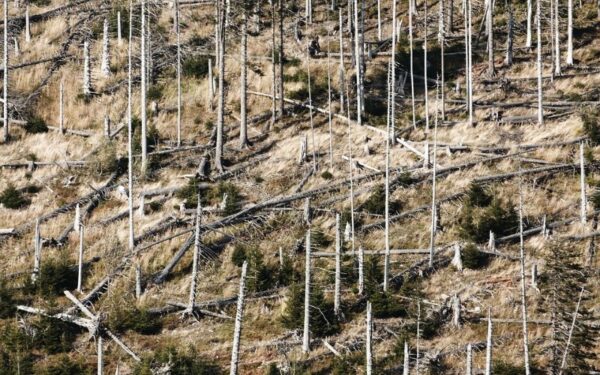What are the challenges in the Spanish forest sector and what type of promising future technologies will be used?
To understand better how to overcome challenges in regions that face similar problems, tune in to see how our client, Ence, has solved these challenges and what David’s perspective is about future solutions in the field.
Challenges in the Spanish Forest Sector
The Spanish forest sector faces several significant challenges that impact its sustainability and productivity. These challenges are multifaceted, involving ecological, economic, and technological dimensions. Addressing these challenges requires innovative solutions and a forward-looking approach to managing Spanish forests.
Climate change and extreme weather are major threats to Spain’s forests. The increase in frequency and severity of weather events such as droughts, heatwaves, and storms can lead to forest degradation, heightened wildfire risks, and altered ecosystems. Rising temperatures and changing precipitation patterns affect tree health and biodiversity within Spanish forests.
Sustainable forest management is another critical challenge. Balancing economic benefits with ecological preservation requires meticulous planning and management practices. Maintaining biodiversity, promoting regeneration, and supporting local communities while managing Spanish forests sustainably is complex. Economic pressures, including the demand for timber and changes in land use, can lead to overexploitation of resources, deforestation, habitat loss, and degradation of forest ecosystems.
Data and monitoring are essential for effective forest management, yet traditional methods are often labor-intensive and lack real-time insights.
Promising Future Technologies
To address these challenges, several promising technologies are emerging in the Spanish forest sector. Remote sensing technologies, such as satellite imagery and drones, are revolutionizing forest monitoring by providing real-time data on forest health, pest infestations, and damage from extreme weather events. Drones equipped with high-resolution cameras and sensors can quickly survey large areas, enabling more efficient and detailed assessments of Spanish forests.
Artificial intelligence (AI) and machine learning are being utilized to analyze the vast amounts of data collected from these technologies. AI algorithms can predict pest outbreaks, assess forest health, and model the impacts of climate change, allowing decision-makers to make more informed and timely decisions. Biocontrol and integrated pest management offer promising solutions to combat pests like bark beetles in Spanish forests. Biocontrol involves using natural predators or pathogens to manage pest populations, reducing reliance on chemical pesticides. Integrated pest management combines various strategies, including biological controls, cultural practices, and targeted treatments.
New software solutions for sustainable forest management integrate data from various sources to optimize practices, enhance planning, and ensure compliance with sustainability standards. These tools help balance economic, ecological, and social objectives in managing Spanish forests.




